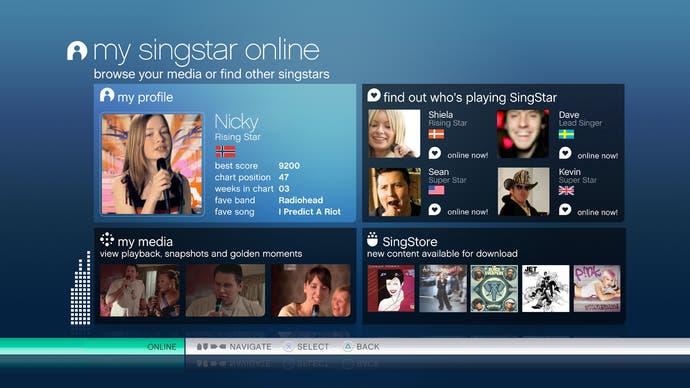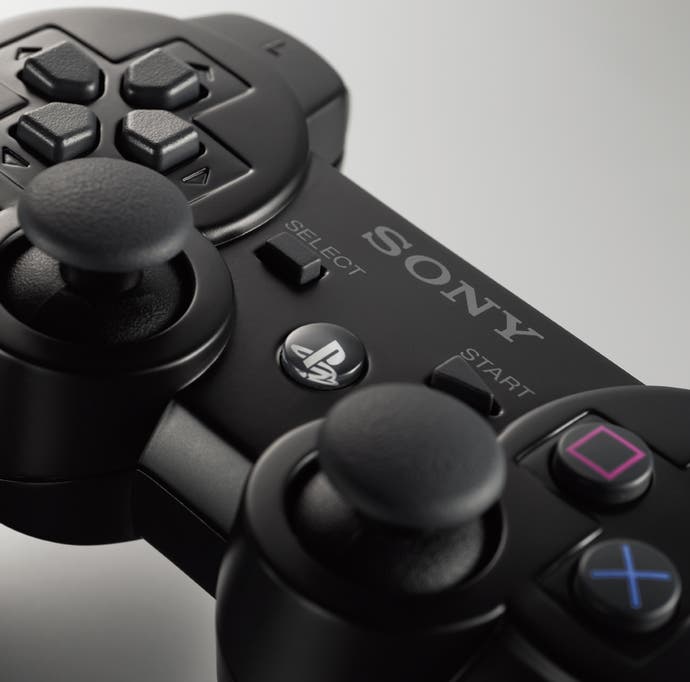PS3 Online: How It Works
Face to face with PlayStation 3's online capabilities.
Either way, you create an account through a fairly simple process - a set of screens which ask you for sign-up information, and you're done. Those screens are actually displayed using the web browser component of the operating system, so it's just like filling in a registration form on a remote website - and then you're done. Every user on PlayStation Network has a single unique ID and sign-in details, just as you'd expect on any online service - and those sign-in IDs are global, so you'll be able to add your friends to your list regardless of where in the world they are.
Oh - and it's all free, too. The only place you'll be asked to fork over a penny is when you purchase something in the PlayStation Store - all of the online services, from sign-up right through to voice and video chat, are free, as is normal multiplayer gaming. There's no equivalent of the Xbox Live Gold account, where you're expected to pay extra for a further tier of services - the only things you'll pay money for are paid-for downloadable content, or subscriptions to premium services like massively multiplayer games.
So, once you add friends, what can you do with them? Obviously enough, you can check their status and see if they're online; you can see if you have any new messages from them, and send them messages. Sending emails through the system uses the same peculiar text messaging style keypad that users of the PSP will be familiar with, which seems a bit painful at first but rapidly becomes a much faster way of entering text than the on-screen keyboards used by other systems - however, if you're not really keen on using that to enter an entire message, you can always plug in any standard USB keyboard, which will work with any text entry field anywhere on the system, as well as with the web browser.
The other options available for you in terms of friends are voice and video chat. We haven't actually seen the accessories which will be used for this in the flesh, but EyeToy and voice headset components for the system are undoubtedly set for release close to launch, and the options for those functions are right there in the operating system already.
Again, those familiar with Xbox Live on the Xbox 360 won't find this terribly surprising, but it's worth noting that the system does show you friend sign-ins and new messages received in overlays on top of the game you're currently playing - just little notification windows which pop up to tell you about something happening with your friends list. At present, however, there's no system for actually reading or responding to messages while you're still in the game, as the operating system doesn't take resources away from games in order to do that - however, according to Harrison, that functionality may well appear in an OS update, presumably based on whether users actually express a desire for it or not.
Shop Till You Drop

Friends are one part of the equation. The other part is the PlayStation Store, which is where you'll be able to buy content, download demos, and manage any premium subscriptions you may have. This is basically the central hub for everything you do with the PS3 online, and it looks the part - again, Sony is making good use of the web browser built into the console, and the PlayStation Store looks quite similar to Apple's iTunes or, more appropriately, Sony's own Connect Music Store. Far from being just a simple list of things you can download, it's a really attractive interface which highlights key content and lets you filter all of the available bits and pieces according to your own preferences - so even when there are thousands of pieces of content on the store, which doesn't seem improbable, it'll still be easy to find what you want. The Store also utilises a shopping cart - so it's easy to browse through items, find the stuff you want, and then go to a checkout page where you proceed to make a sad face and empty the whole cart again, just like we do on Amazon about four times a week.
We're not going to talk in much depth about PlayStation Store, because what we saw was still undoubtedly being worked on frantically to prepare for the November launch. However, there are a few elements that it's worth talking about - the first of which is the Wallet, which lies at the heart of how you buy things on the Store. Unlike Nintendo and Microsoft's offerings, Sony doesn't hide the price of items behind an arbitrary "points" scheme - instead, everything simply lists a price in your local currency, so European types will see a Euro price, British people will see prices in Pounds Sterling, and so on. The Wallet, then, is basically your transaction centre - you put money into the Wallet, and then spend it in the store. Equally, you can set it up so that if you have associated accounts, for children for example, you can put a certain amount into their Wallets each month, giving them an allowance for how much can be spent on new content. Crucially, the Wallet is used for everything on the system - even for MMOG subscriptions to third parties. If it's on the PlayStation Network, you pay for it via Sony and the transaction with the third party is worked out elsewhere - so you're not expected to give credit card details out willy-nilly to everyone with content or services on the PS3.
Another interesting aspect of the Store, which Harrison first talked about at GDC last March, is the fact that while you'll be able to access all forms of content through the "generic store" that you view from the PS3 dashboard, games will also be able to have more specific stores which use the same interface, but display only downloads relevant to their content. Thanks to the web-based interface, games will be able to re-skin those stores to fit with their look and feel, and you'll access them directly from the in-game menu - which is a fairly minor touch, but a nice one nonetheless.
As to the content that will be available, Sony is still playing its cards close to its chest to some extent - but one thing the giant firm is clear on is that the PlayStation Store will grow to encompass more than just new game content and demos. Alongside the free and paid-for game content, the store will also play host to a wide range of new titles developed specifically for download (the first of which, fl0w, was shown off at TGS - dozens more PlayStation Store exclusive titles are being worked on around the world thanks to an initiative which Sony launched at GDC last year) - and as Ken Kutaragi revealed at TGS last month, it'll also be possible to buy PSone and PS2 classics you missed out on, as well as a selection of PSP games, from the PlayStation Store, and download them directly to your PS3.
It may not end there. Sony, after all, is one of the biggest music and movie companies in the world - and it already operates a music store, Connect. While no official plans to allow you to download music and movies directly to your PS3 have been announced, Sony insiders are adamant that that is on the roadmap for the service - so within a short space of time, the money in your Wallet could be used to buy any type of digital entertainment you fancy.
Brave New World

Once bitten, twice shy, the old saying goes - and based on that logic, Sony has some way to go before proving to people that it can do a comprehensive online gaming service. However, what we've seen is very promising. Account creation and management, buddy lists and various types of chat appear to be working just fine, the interface is simple and elegant, and the PlayStation Store, even at this early stage, looks like being one aspect of the service which will be a genuine improvement over Microsoft's offering, Xbox Live Marketplace - which is well-stocked, but has a terrible user interface that struggles to cope with the amount of content now available, and has only been marginally improved by recent updates.
There's still some way to go - and one area we're still intrigued by is what Sony will do about user profiles, which Microsoft revolutionised with Xbox 360 thanks to Gamer Points and Achievements. Love 'em or hate 'em, they're a big draw for many people, and how Sony will handle this aspect of its community remains to be seen.
However, for now we can say for certain that the online service is there - it exists and it's working, and according to Harrison, it will definitely launch right alongside the console this November. For those of us in Europe, of course, that probably means the rest of the world gets to iron out all the bugs before we see the console in March - there's always a silver lining on every dark cloud. Whatever your views on the console war may be, this is an excellent thing for gamers. Microsoft have a vast head-start over Sony online, but Sony's service has clearly learned many lessons from observing its rival, and in areas like the Store, is actually introducing new ideas and strong features which provide a genuine challenge. Head-start or not, Sony is now, finally, snapping at Microsoft's heels in the online space - and as the two giants inevitably launch into a race to take or maintain the lead in online services, the biggest winners of all will be gamers.








